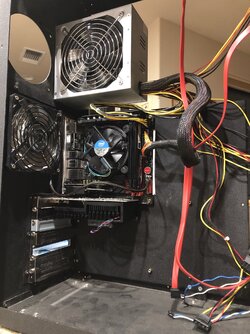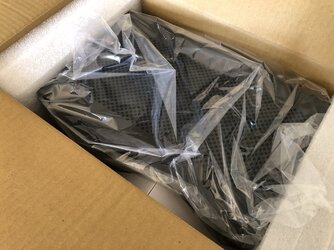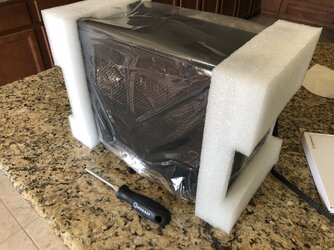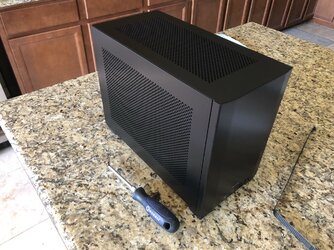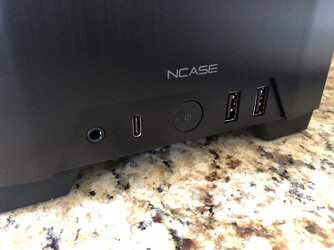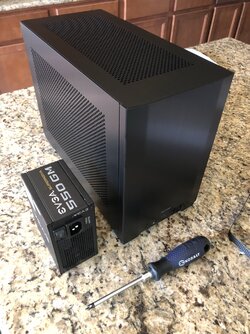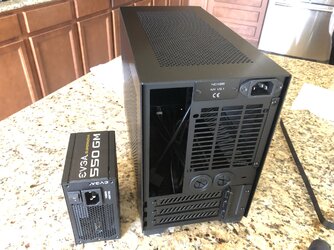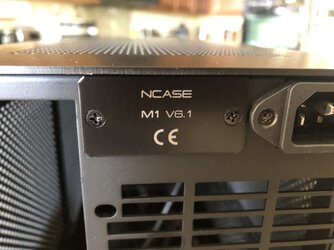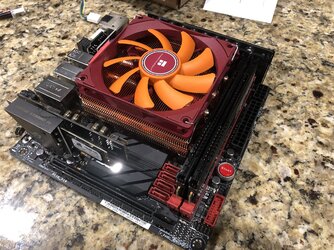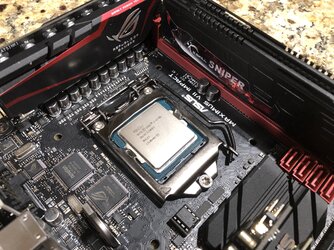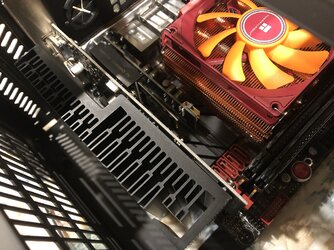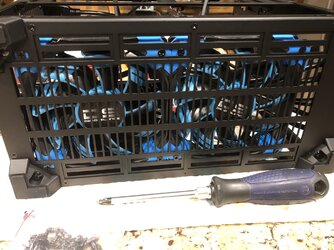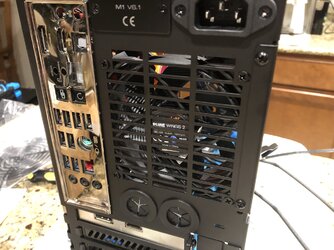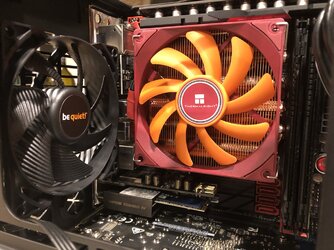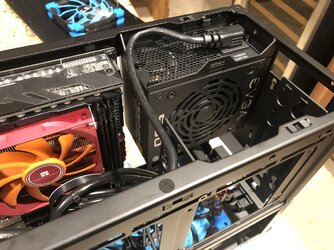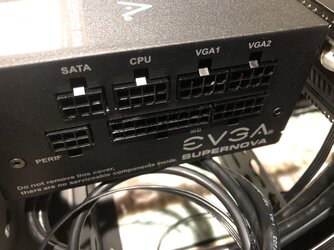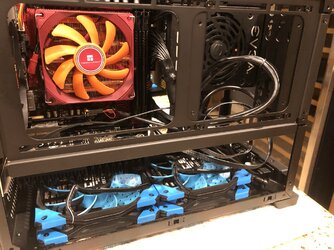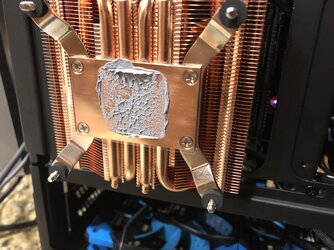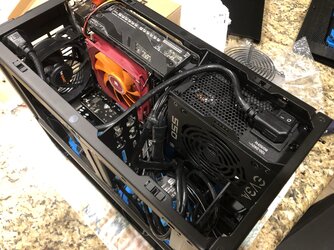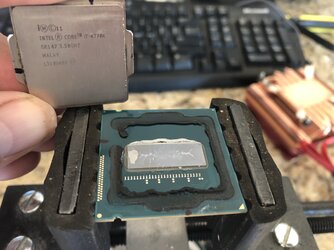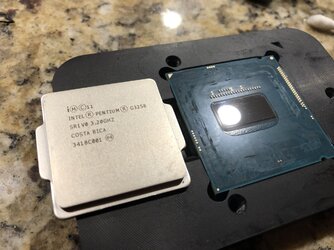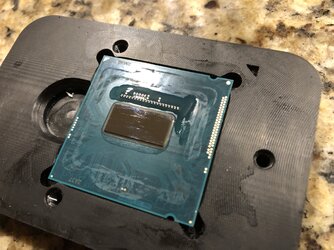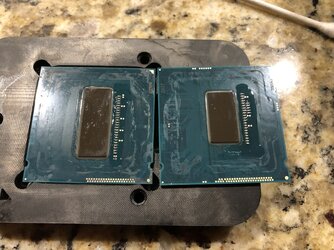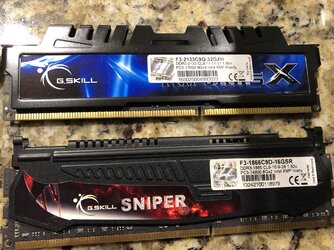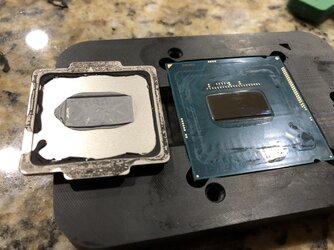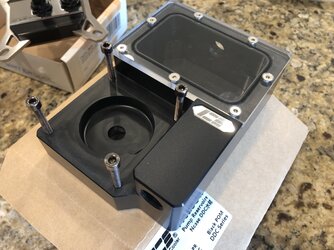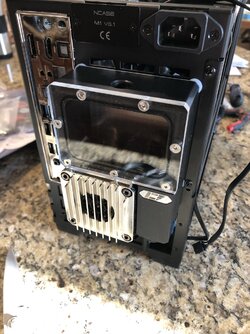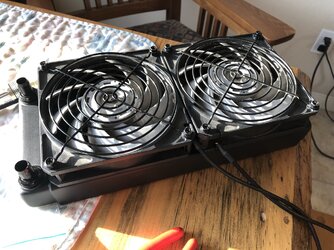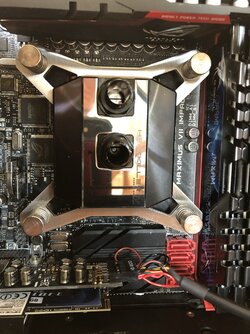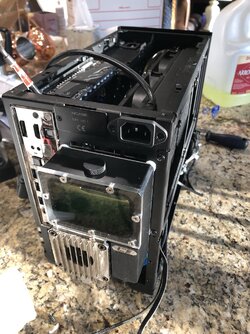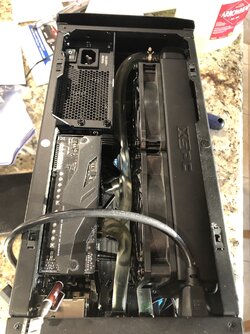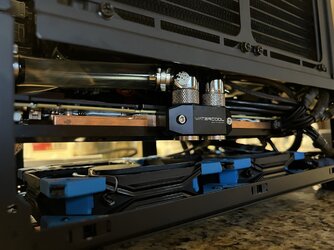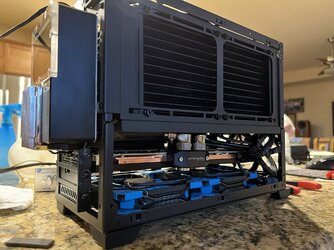- Joined
- Sep 20, 2001
- Location
- Bakersfield, CA
I picked up this sweet little Asus Maximus Impact VII ITX board with a 4770K and 16GB of DDR3 1866. It was the only Z97 I could find in this form factor that actually will service a PCIE 3x4 NVME by sharing half the lanes from the PCIE slot, so it should be pretty zippy with the Mushkin Pilot E I bought for it.
I'm going to get Windows installed and test out the temps and OC'ing of this thing. I know these were pretty easy to delid, so I may do that if I don't like the temps. I also have a Thermalright AXP-90I full copper 47mm tall heatsink incoming. I have a variety of water cooling gear I could throw at it too, but I am a little leery of doing that on top of my pretty expensive home theater electronics setup, even with my track record of zero leaks in 20 years, so I'll stick to air cooling for now. GPU will be the GT1030 as seen in the pics below, but if I want to game I may swap in my 1660 Super.
So here it is in my old Mountain Mods Pinnacle 24 case for S&G's, and it does look hilarious in such a big super tower.
What I need now is an ITX mini tower or desktop style case. I'm pondering the Ncase M1, Cooler Master NR200, and Fractal Node 202. max height tolerated will be 12" so it's the same height or shorter than my center channel. A friend suggested an even smaller cube case, but I don't know of any. I'm open to suggestions!

I'm going to get Windows installed and test out the temps and OC'ing of this thing. I know these were pretty easy to delid, so I may do that if I don't like the temps. I also have a Thermalright AXP-90I full copper 47mm tall heatsink incoming. I have a variety of water cooling gear I could throw at it too, but I am a little leery of doing that on top of my pretty expensive home theater electronics setup, even with my track record of zero leaks in 20 years, so I'll stick to air cooling for now. GPU will be the GT1030 as seen in the pics below, but if I want to game I may swap in my 1660 Super.
So here it is in my old Mountain Mods Pinnacle 24 case for S&G's, and it does look hilarious in such a big super tower.
What I need now is an ITX mini tower or desktop style case. I'm pondering the Ncase M1, Cooler Master NR200, and Fractal Node 202. max height tolerated will be 12" so it's the same height or shorter than my center channel. A friend suggested an even smaller cube case, but I don't know of any. I'm open to suggestions!
